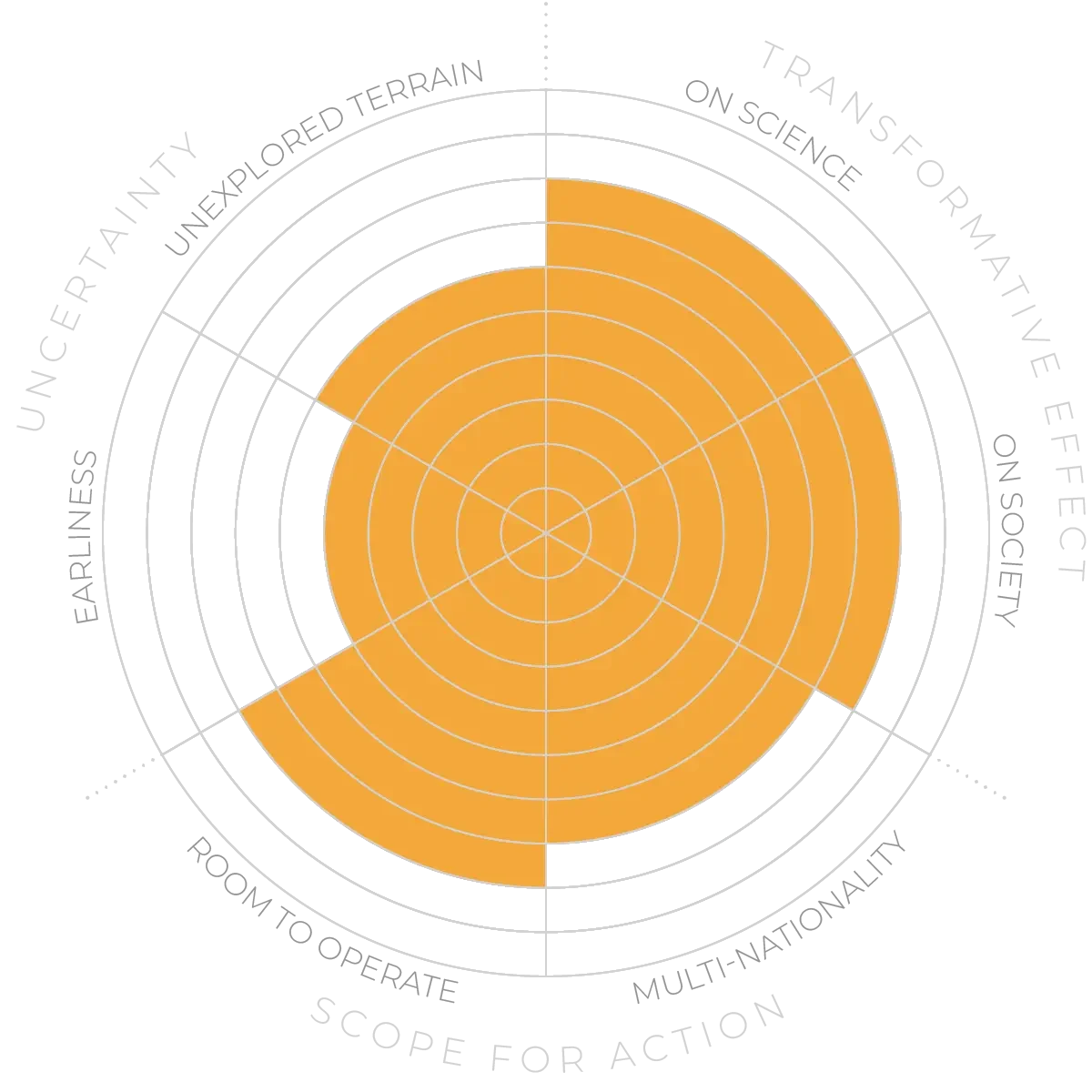Several megatrends are changing how intergroup conflict plays out. The changing climate, for instance, alters the viability of some lifestyles while opening up new ones — pastoralism versus mining in the Arctic, for example.6 The superpower face-off of the late 20th century has given way to a new, more multipolar environment in which nations may simultaneously collaborate and compete, or enter into new alliances and alignments. These factors are causing significant changes in global mobility and thus leading to novel intergroup interactions.
Future Horizons:
10-yearhorizon
Migration creates novel interactions
25-yearhorizon
Research facilitates addressing global challenges as they arise
Combined with greater interconnection, this allows people to find and build common cause with others with whom they might previously have shared little affinity or even mutual awareness. This creates new groups which may span geographies — for example, climate activists engaging in stochastic disruption, or the formation of new political blocs. Conversely, it can lead to competition for resources, whether real or perceived, and friction over cultural norms. These consequences might equally arise from forced migration away from poorer countries as from lifestyle tourism into them. State actors may also exploit these trends, for example through online propaganda or proxy conflicts.
Overlaid on all these factors are the effects of digital communication, particularly those mediated by opaque algorithms. This can lead to distorted perceptions about both social opportunities and threats, including the motivations and intentions of others. Across contexts and cultures, overly negative “meta-perceptions” make people believe the worst of the other side and encourage support for hostile actions against them. Dramatic increases in polarisation suggest this is an increasing problem. Corrective information can de-escalate hostility, however, and engender a positive shift in attitude.
Interaction with wider global trends - Anticipation Scores
The Anticipation Potential of a research field is determined by the capacity for impactful action in the present, considering possible future transformative breakthroughs in a field over a 25-year outlook. A field with a high Anticipation Potential, therefore, combines the potential range of future transformative possibilities engendered by a research area with a wide field of opportunities for action in the present. We asked researchers in the field to anticipate:
- The uncertainty related to future science breakthroughs in the field
- The transformative effect anticipated breakthroughs may have on research and society
- The scope for action in the present in relation to anticipated breakthroughs.
This chart represents a summary of their responses to each of these elements, which when combined, provide the Anticipation Potential for the topic. See methodology for more information.



